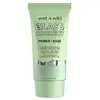What's inside
What's inside
 Key Ingredients
Key Ingredients

 Benefits
Benefits

 Concerns
Concerns

 Ingredients Side-by-side
Ingredients Side-by-side

Water
Skin ConditioningGlycerin
HumectantButylene Glycol
HumectantEthylhexyl Isononanoate
EmollientSqualane
EmollientHydrogenated Polyisobutene
EmollientDiisostearyl Malate
EmollientTriethylhexanoin
MaskingSteareth-10
EmulsifyingAmmonium Acryloyldimethyltaurate/Vp Copolymer
Phenoxyethanol
PreservativeGlyceryl Stearate
EmollientPEG-100 Stearate
Ethylhexylglycerin
Skin ConditioningTocopheryl Acetate
AntioxidantSpirulina Platensis Powder
Skin ProtectingTetrahexyldecyl Ascorbate
AntioxidantCI 77491
Cosmetic ColorantCI 77492
Cosmetic ColorantMica
Cosmetic ColorantTitanium Dioxide
Cosmetic ColorantChromium Oxide Greens
Water, Glycerin, Butylene Glycol, Ethylhexyl Isononanoate, Squalane, Hydrogenated Polyisobutene, Diisostearyl Malate, Triethylhexanoin, Steareth-10, Ammonium Acryloyldimethyltaurate/Vp Copolymer, Phenoxyethanol, Glyceryl Stearate, PEG-100 Stearate, Ethylhexylglycerin, Tocopheryl Acetate, Spirulina Platensis Powder, Tetrahexyldecyl Ascorbate, CI 77491, CI 77492, Mica, Titanium Dioxide, Chromium Oxide Greens
Water
Skin ConditioningCyclopentasiloxane
EmollientDimethicone
EmollientPolysilicone-11
Tocopheryl Acetate
AntioxidantSodium Hyaluronate
HumectantCamellia Sinensis Leaf Extract
AntimicrobialGelidiella Acerosa Extract
Skin ProtectingMorus Bombycis Root Extract
Skin ConditioningHypnea Musciformis Extract
Skin ProtectingVitis Vinifera Fruit Extract
Skin ConditioningPoria Cocos Sclerotium Extract
AstringentScutellaria Baicalensis Root Extract
AstringentLaminaria Saccharina Extract
Skin ProtectingAlgae Extract
EmollientCaffeine
Skin ConditioningSilica
AbrasiveIsopentyldiol
HumectantSucrose
HumectantSaccharide Isomerate
HumectantAlumina
AbrasiveHdi/Trimethylol Hexyllactone Crosspolymer
Magnesium Myristate
Polysorbate 20
EmulsifyingPEG/PPG-18/18 Dimethicone
EmulsifyingAmmonium Acryloyldimethyltaurate/Vp Copolymer
Triethoxycaprylylsilane
Butylene Glycol
HumectantCaprylyl Glycol
EmollientHexylene Glycol
EmulsifyingMagnesium Ascorbyl Phosphate
AntioxidantPotassium Sorbate
PreservativePhenoxyethanol
PreservativeMica
Cosmetic ColorantCI 77891
Cosmetic ColorantIron Oxides
CI 77163
Cosmetic ColorantWater, Cyclopentasiloxane, Dimethicone, Polysilicone-11, Tocopheryl Acetate, Sodium Hyaluronate, Camellia Sinensis Leaf Extract, Gelidiella Acerosa Extract, Morus Bombycis Root Extract, Hypnea Musciformis Extract, Vitis Vinifera Fruit Extract, Poria Cocos Sclerotium Extract, Scutellaria Baicalensis Root Extract, Laminaria Saccharina Extract, Algae Extract, Caffeine, Silica, Isopentyldiol, Sucrose, Saccharide Isomerate, Alumina, Hdi/Trimethylol Hexyllactone Crosspolymer, Magnesium Myristate, Polysorbate 20, PEG/PPG-18/18 Dimethicone, Ammonium Acryloyldimethyltaurate/Vp Copolymer, Triethoxycaprylylsilane, Butylene Glycol, Caprylyl Glycol, Hexylene Glycol, Magnesium Ascorbyl Phosphate, Potassium Sorbate, Phenoxyethanol, Mica, CI 77891, Iron Oxides, CI 77163
Ingredients Explained
These ingredients are found in both products.
Ingredients higher up in an ingredient list are typically present in a larger amount.
Ammonium Acryloyldimethyltaurate/Vp Copolymer (let's call it AAVC for short) is a synthetically created polymer. It's used as a film-forming agent and used to thicken the consistency of products.
AAVC is able to increase the consistency and viscosity of products due to its large molecule size. It also prevents ingredients from separating.
Butylene Glycol (or BG) is used within cosmetic products for a few different reasons:
Overall, Butylene Glycol is a safe and well-rounded ingredient that works well with other ingredients.
Though this ingredient works well with most skin types, some people with sensitive skin may experience a reaction such as allergic rashes, closed comedones, or itchiness.
Learn more about Butylene GlycolMica is a naturally occurring mineral used to add shimmer and color in cosmetics. It can also help improve the texture of a product or give it an opaque, white/silver color.
Serecite is the name for very fine but ragged grains of mica.
This ingredient is often coated with metal oxides like titanium dioxide. Trace amounts of heavy metals may be found in mica, but these metals are not harmful in our personal products.
Mica has been used since prehistoric times throughout the world. Ancient Egyptian, Indian, Greek, Roman, Aztec, and Chinese civilizations have used mica.
Learn more about MicaPhenoxyethanol is a preservative that has germicide, antimicrobial, and aromatic properties. Studies show that phenoxyethanol can prevent microbial growth. By itself, it has a scent that is similar to that of a rose.
It's often used in formulations along with Caprylyl Glycol to preserve the shelf life of products.
Tocopheryl Acetate is AKA Vitamin E. It is an antioxidant and protects your skin from free radicals. Free radicals damage the skin by breaking down collagen.
One study found using Tocopheryl Acetate with Vitamin C decreased the number of sunburned cells.
Tocopheryl Acetate is commonly found in both skincare and dietary supplements.
Learn more about Tocopheryl AcetateWater. It's the most common cosmetic ingredient of all. You'll usually see it at the top of ingredient lists, meaning that it makes up the largest part of the product.
So why is it so popular? Water most often acts as a solvent - this means that it helps dissolve other ingredients into the formulation.
You'll also recognize water as that liquid we all need to stay alive. If you see this, drink a glass of water. Stay hydrated!
Learn more about Water